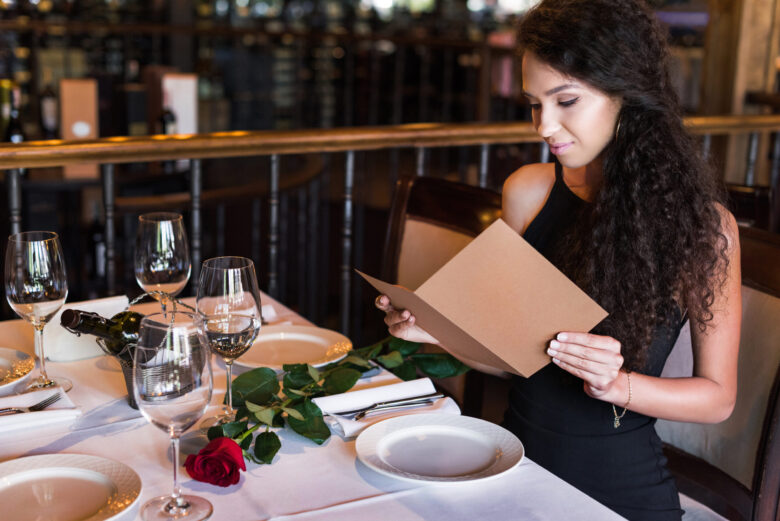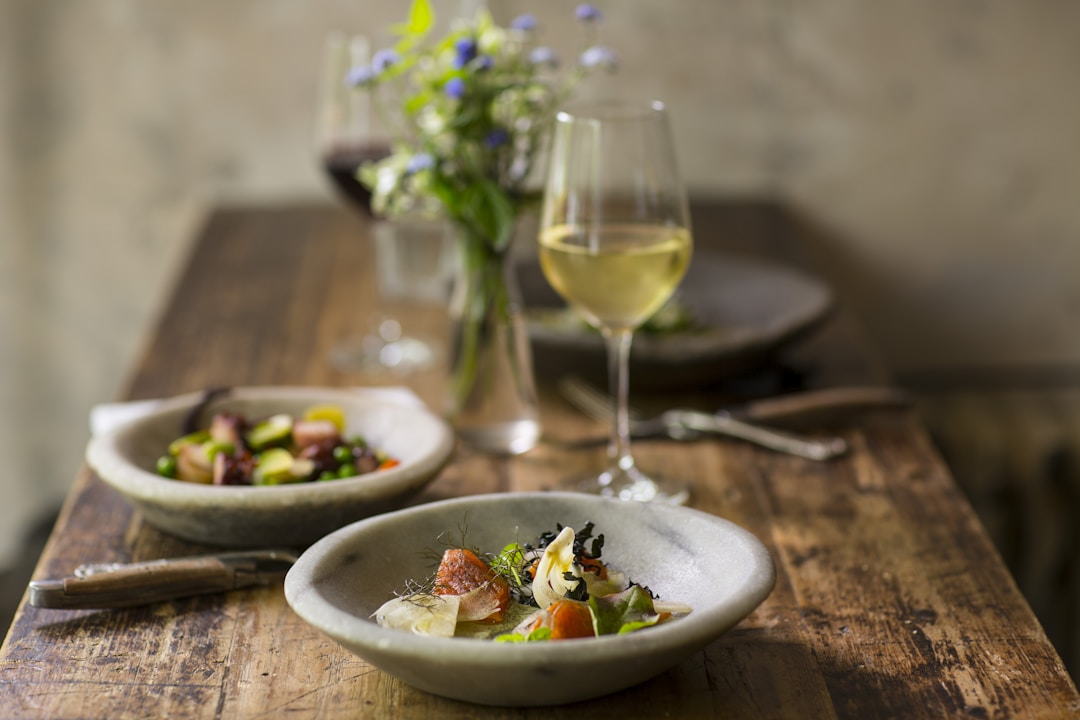
How To Elevate Your Restaurant Menu
In the dynamic culinary landscape of the 21st century, the phrase, “You eat with your eyes first” has never been truer. With the explosion of social media platforms, especially those that rely heavily on visuals like Instagram and Pinterest, the demand for not just flavorful, but also aesthetically appealing dishes, has soared.
Whether you’re an established restaurateur or just starting out, the menu is the beating heart of your enterprise. It’s more than just a list of dishes—it’s a reflection of your brand, your ethos, and your culinary vision. To ensure your menu stands out and attracts a loyal clientele, it’s crucial to refine it, making it the best representation of what your restaurant has to offer. Here are some insightful strategies to elevate your restaurant menu to stellar heights.
Incorporating Fresh and Seasonal Ingredients
It’s a no-brainer that fresh ingredients result in better-tasting dishes. Many top-tier restaurants have begun embracing local produce, not only because they’re fresher but also for their environmental and economic benefits. When discussing fresh produce, the incorporation of specialty vegetables for foodservice industry companies is an emerging trend. These unique vegetables, often heirloom varieties or less common cultivars, can bring both rich flavors and vibrant colors to a plate, giving the chef a palette to craft dishes that are both delightful to taste and sight. By promoting these ingredients on your menu, it signals to diners that you are committed to quality, uniqueness, and flavor.
Understanding Your Clientele and Local Preferences

Crafting a menu isn’t just about listing what the chef can make—it’s also about understanding what your customers want. Local preferences play a huge role in determining the success of certain dishes. For instance, spicy dishes might be more popular in areas with a culture of consuming spicy foods.
Engage with your customers, either in person or through feedback forms. Know their preferences, dietary restrictions, and what they’d like to see more of. This engagement not only helps in creating a menu tailored to their tastes but also makes them feel valued, building a bond that can turn a casual diner into a regular patron.
Diverse Yet Cohesive Menu Offerings
A big mistake many restaurants make is trying to offer too much. While it’s tempting to cater to every possible palate, a sprawling menu can often confuse customers and put undue stress on your kitchen staff. Instead, focus on crafting a limited number of dishes that showcase the best of your culinary skills and local ingredients, such as fresh produce and locally crafted beer.
However, diversity is key. Make sure to include options for vegetarians, vegans, and those with common food allergies or intolerances. This doesn’t mean you need an item for every dietary requirement, but having a good mix ensures that groups with diverse needs can all find something appealing on your menu.
Balancing Familiarity with Innovation
While it’s vital to innovate and offer unique dishes, one must also consider the comfort of familiarity. Customers often gravitate toward dishes they know and love. Hence, striking a balance is crucial.
Consider taking classic dishes and giving them a twist, either in presentation or with a unique ingredient. This gives patrons the comfort of the familiar while still providing an element of surprise. For instance, a classic Margherita pizza can be elevated with a drizzle of truffle oil or a unique, aged cheese.
Visually Appealing Presentation and Descriptive Menus
A dish’s presentation can elevate a diner’s experience exponentially. Investing time in training your chefs and serving staff on the art of plate presentation is essential. Using dishes and cutlery that complement the food’s aesthetics can also make a significant difference.
Furthermore, the way you describe dishes on your menu matters. Instead of a simple ‘chicken salad’, a ‘succulent grilled chicken salad with farm-fresh greens, roasted almonds, and a tangy vinaigrette’ sounds infinitely more appetizing. Descriptive menus create an image in the diner’s mind, setting expectations and building anticipation.
Invest in Regular Menu Training for Staff
Your staff should be well-acquainted with the menu. They must know the ingredients, preparation methods, and ideally, the taste and presentation of each dish. When servers can provide recommendations, answer questions confidently, and perhaps share a brief story behind a dish, it enhances the dining experience for the customer. Regular training sessions ensure that everyone is on the same page and can offer consistent information to diners.
Engaging with Local Art and Culture
A restaurant isn’t an isolated entity—it’s part of the community. By engaging with local artists and cultural events, you can make your restaurant a hub for community engagement. Rotate artwork from local artists on your walls, host local musicians, or even have theme nights based on local festivals and traditions. This not only offers diners a unique experience but also roots your restaurant in the community, making it a familiar and cherished spot.
Innovative Beverage Pairings
While a lot of emphasis is put on the food, beverages, especially when paired rightly with the dishes, can significantly amplify the dining experience. Instead of just offering the usual wine pairings, consider diversifying. Craft beers, artisanal cocktails, mocktails, or even teas can be paired beautifully with various dishes. For instance, a spicy Asian dish might go splendidly with a tangy, citrus-infused cocktail or a robust craft beer. Organize tasting events where diners can explore these pairings, turning a simple meal into a delightful exploration of flavors.
Interactive Dining Experiences
The contemporary diner often seeks more than just food when they step into a restaurant—they’re looking for an experience. Offering interactive dining can be a fantastic way to satiate this desire. Live cooking stations, where patrons can watch chefs artfully prepare dishes, or DIY sections, where diners can customize their dishes, can add an element of engagement. Such experiences make the diner a part of the culinary process, creating a deeper connection with the food and the establishment.
Storytelling: A Menu with a Narrative
Every dish has a story—the origin of its ingredients, the inspiration behind its creation, or the history of the recipe. Sharing these stories can deeply enrich the dining experience. Instead of merely listing dishes, narrate their stories. Whether it’s a grandmother’s recipe, a dish inspired by the chef’s travels, or a concoction born out of a happy kitchen accident, these tales can make the dining experience more intimate and personal. Additionally, it offers diners a conversation starter, making their meal more than just a gastronomic journey—a narrative adventure.
Emphasizing Sustainable and Ethical Practices

The modern diner is more informed and conscious about sustainability and ethics than ever before. Integrating sustainable practices into your restaurant operations can appeal to this growing segment. Whether it’s sourcing ingredients from local, organic farms to benefit from local and specialty produce, implementing water and energy-saving measures, or ensuring the ethical treatment of staff—these practices do more than just appeal to patrons. They also ensure a more holistic and responsible approach to the restaurant business, benefiting the community, the environment, and the bottom line.
Regularly Update and Rotate Dishes
While having signature dishes is essential, occasionally refreshing your menu keeps things exciting for regular patrons. Seasonal rotations, where you introduce dishes based on available seasonal ingredients, can keep the menu fresh and exciting. This not only provides variety but also underscores your commitment to fresh and relevant offerings.
Conclusion: Crafting a Culinary Symphony
Elevating a restaurant menu goes beyond just listing dishes—it’s about crafting a culinary journey that resonates with diners, offering them a symphony of flavors, textures, and visuals. By incorporating fresh ingredients, understanding local preferences, offering a cohesive yet diverse selection, balancing innovation with familiarity, and investing in presentation and staff training, you set the stage for a memorable dining experience. Remember, in the world of dining, it’s not just about satiating hunger—it’s about creating stories and memories that linger, encouraging patrons to return for another chapter in their gastronomic adventure.
